For many, the dream of sharing their lives with a canine companion is tempered by the reality of allergies. Dog allergies are a common concern, but the good news is that several breeds are known for producing fewer allergens, making them a fantastic option for allergy sufferers. While no dog is truly “hypoallergenic,” certain breeds are significantly better suited for individuals who experience allergic reactions to pet dander, saliva, and urine. This guide explores some of the top dog breeds that have less hair and may be the perfect fit for your home.
Understanding “Hypoallergenic” Dogs
The term “hypoallergenic” in dogs refers to breeds that are less likely to trigger an allergic reaction. This is primarily due to their coat type and shedding patterns. Dogs produce allergens in their dander (dead skin cells), saliva, and urine. Breeds with coats that shed less or have a different texture often release fewer dander-carrying hairs into the environment. However, it’s crucial to remember that no dog breed is completely allergen-free. Even breeds considered hypoallergenic can still cause reactions in highly sensitive individuals.
The key lies in finding a breed that minimizes allergen production. This often means focusing on dogs that don’t shed much or have hair that grows continuously, rather than fur that sheds seasonally.
Breeds with Less Hair: Your Guide to Allergy-Friendly Dogs
If you’re searching for a canine friend but are concerned about allergies, exploring breeds known for their reduced shedding and allergen output is a great starting point. Here are some of the most popular and suitable breeds that don’t have a lot of hair in the traditional sense, or whose hair type is less allergenic:
1. Poodle (Standard, Miniature, and Toy)
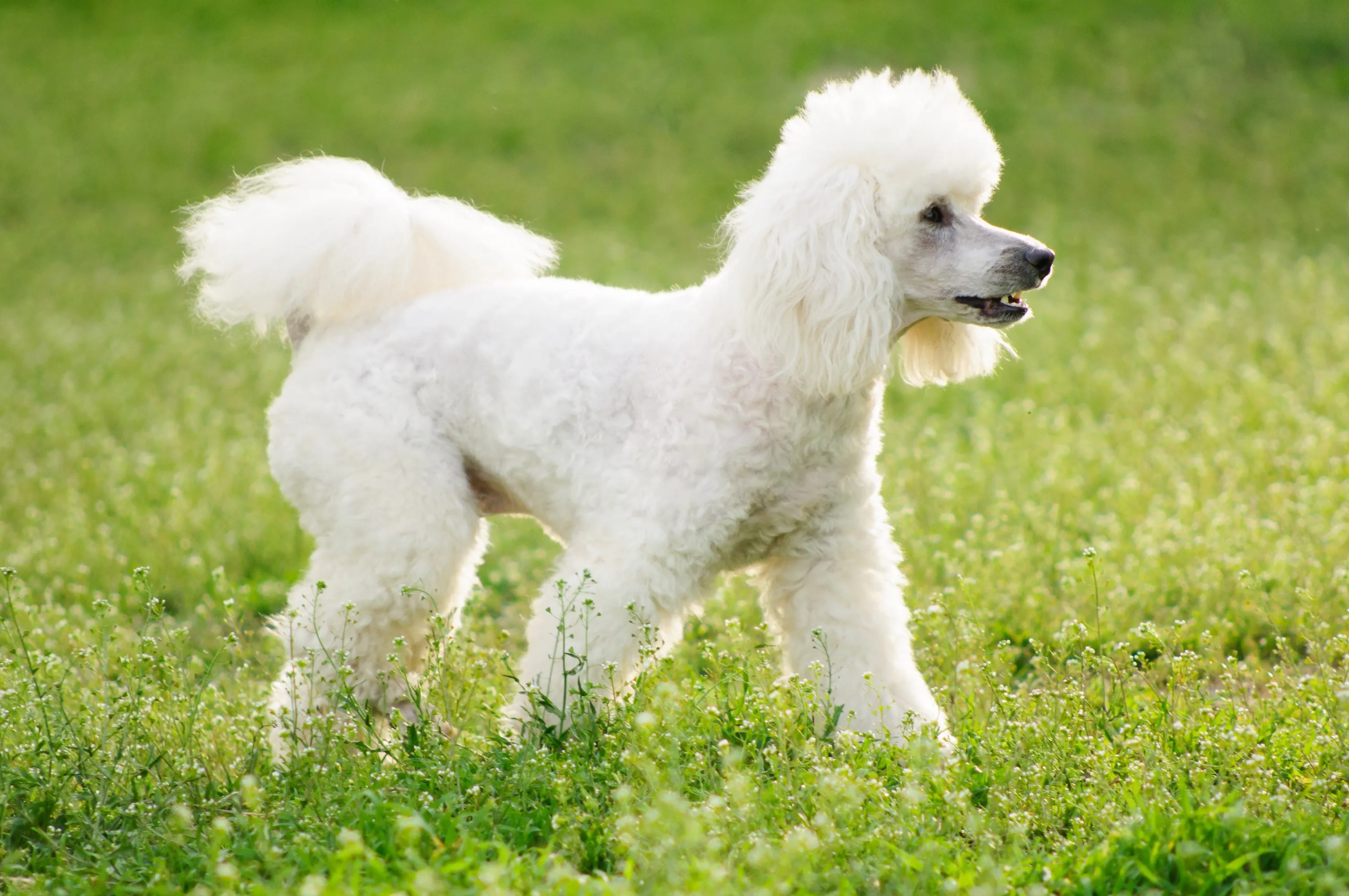 A white Poodle with a well-groomed coat stands alert in a grassy field.
A white Poodle with a well-groomed coat stands alert in a grassy field.
Poodles, in all their sizes, are renowned for their hypoallergenic qualities. They have a curly, dense coat that sheds very little. Instead of shedding fur, their hair grows continuously, similar to human hair, and tends to get caught in the coat, reducing its spread. This makes them an excellent choice for allergy sufferers. Poodles are also highly intelligent and trainable, making them adaptable and enjoyable companions. Regular grooming is essential to prevent matting and keep their coat healthy.
2. Yorkshire Terrier
 A small Yorkshire Terrier with striking blue and tan markings rests comfortably on an armchair.
A small Yorkshire Terrier with striking blue and tan markings rests comfortably on an armchair.
These pint-sized pooches, often called “Yorkies,” boast a fine, silky coat that resembles human hair. They shed minimally, making them a popular choice for those with dog allergies. Yorkies are known for their spunky, affectionate personalities and can adapt well to various living environments, from spacious homes to compact apartments, as long as they receive plenty of attention.
3. Shih Tzu
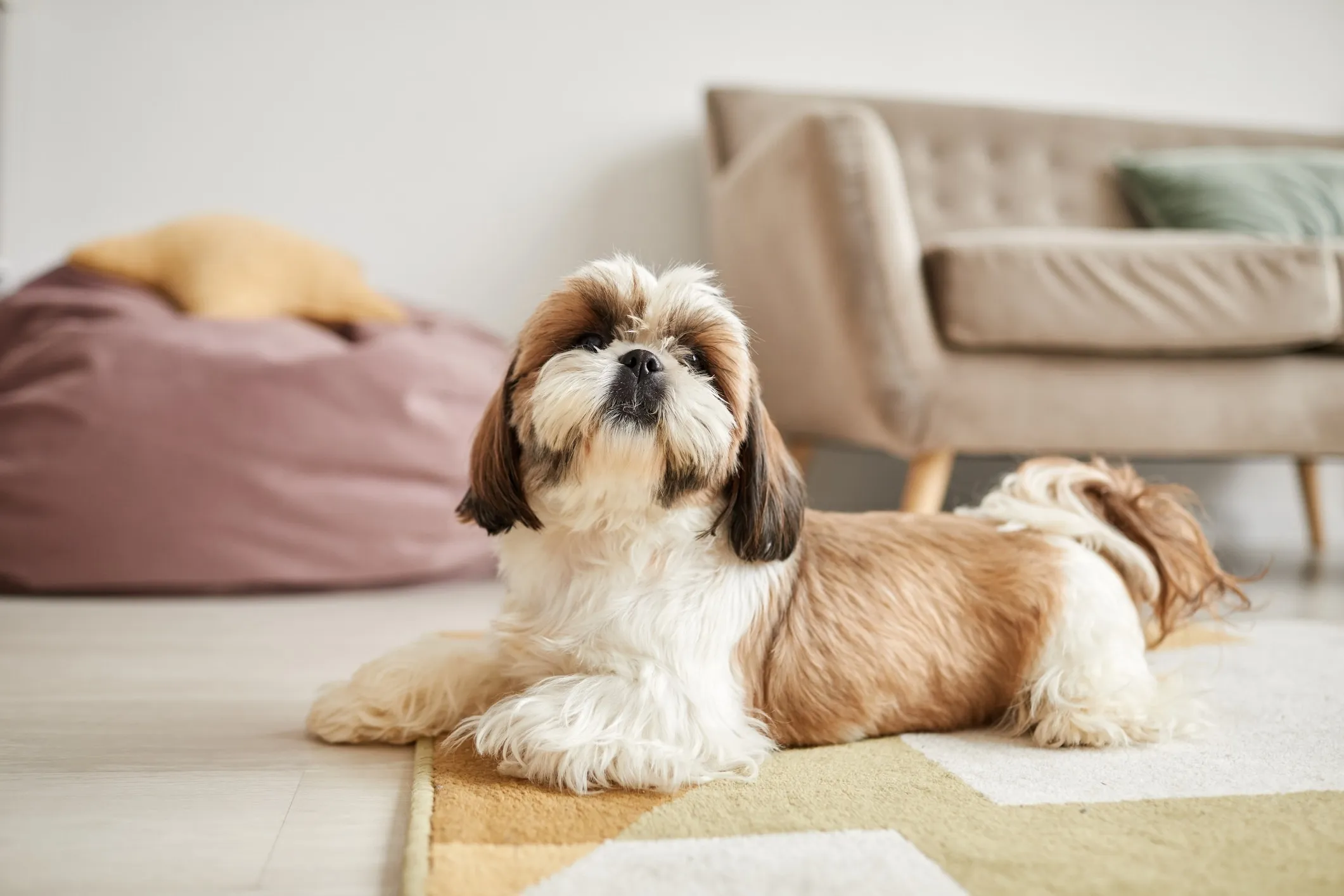 A Shih Tzu with a mix of brown and white fur lies relaxed on a living room floor.
A Shih Tzu with a mix of brown and white fur lies relaxed on a living room floor.
An ancient companion breed, the Shih Tzu possesses a thick, flowing coat that, despite its appearance, sheds very little. This breed is known for its friendly temperament. However, their brachycephalic (flat) facial structure means they can be prone to certain health issues like overheating and breathing difficulties. Careful attention to eye hygiene is also necessary to manage potential tear stains.
4. Schnauzer (Miniature, Standard, and Giant)
 A Miniature Schnauzer with a distinctive salt and pepper coat wears a pink harness in a park setting.
A Miniature Schnauzer with a distinctive salt and pepper coat wears a pink harness in a park setting.
All Schnauzer breeds—Miniature, Standard, and Giant—are considered good options for allergy sufferers due to their wiry, low-shedding coats. The Miniature Schnauzer is the smallest, while the Standard and Giant varieties are progressively larger. These intelligent dogs require regular grooming, including brushing and occasional stripping, to maintain their coat’s condition and minimize dander. They generally have high energy levels and benefit from consistent exercise.
5. Bichon Frise
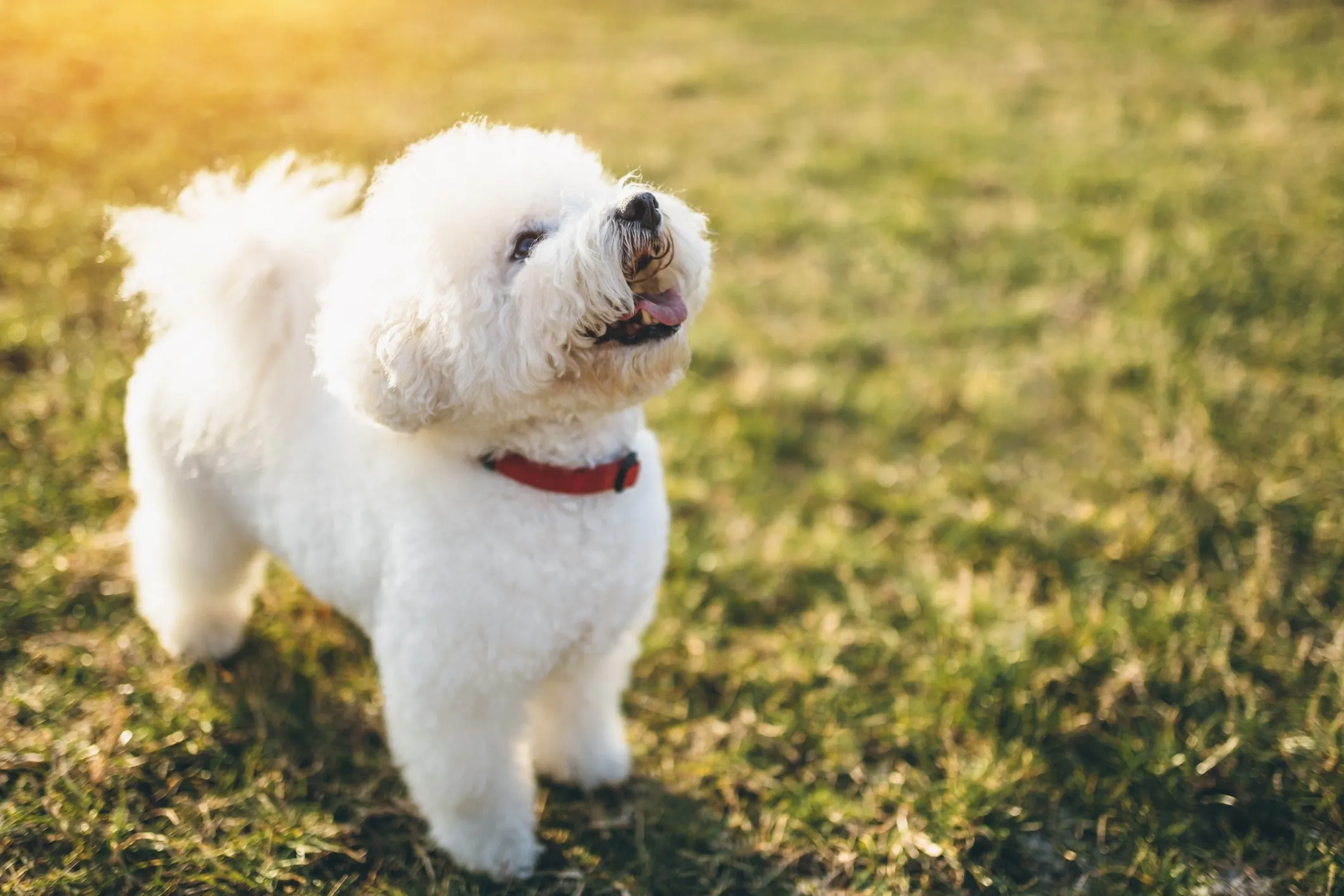 A fluffy white Bichon Frise looks upwards with a curious expression while sitting in a patch of grass.
A fluffy white Bichon Frise looks upwards with a curious expression while sitting in a patch of grass.
The Bichon Frise is a small, cheerful dog with a charming, curly, hypoallergenic coat. Their coat sheds very little, making them an attractive option for allergy-prone families. Bichons are highly intelligent and trainable, responding well to positive reinforcement. Their playful and affectionate nature makes them excellent companions. Consistent grooming is key to preventing matting and keeping their signature white coat pristine.
6. Chinese Crested
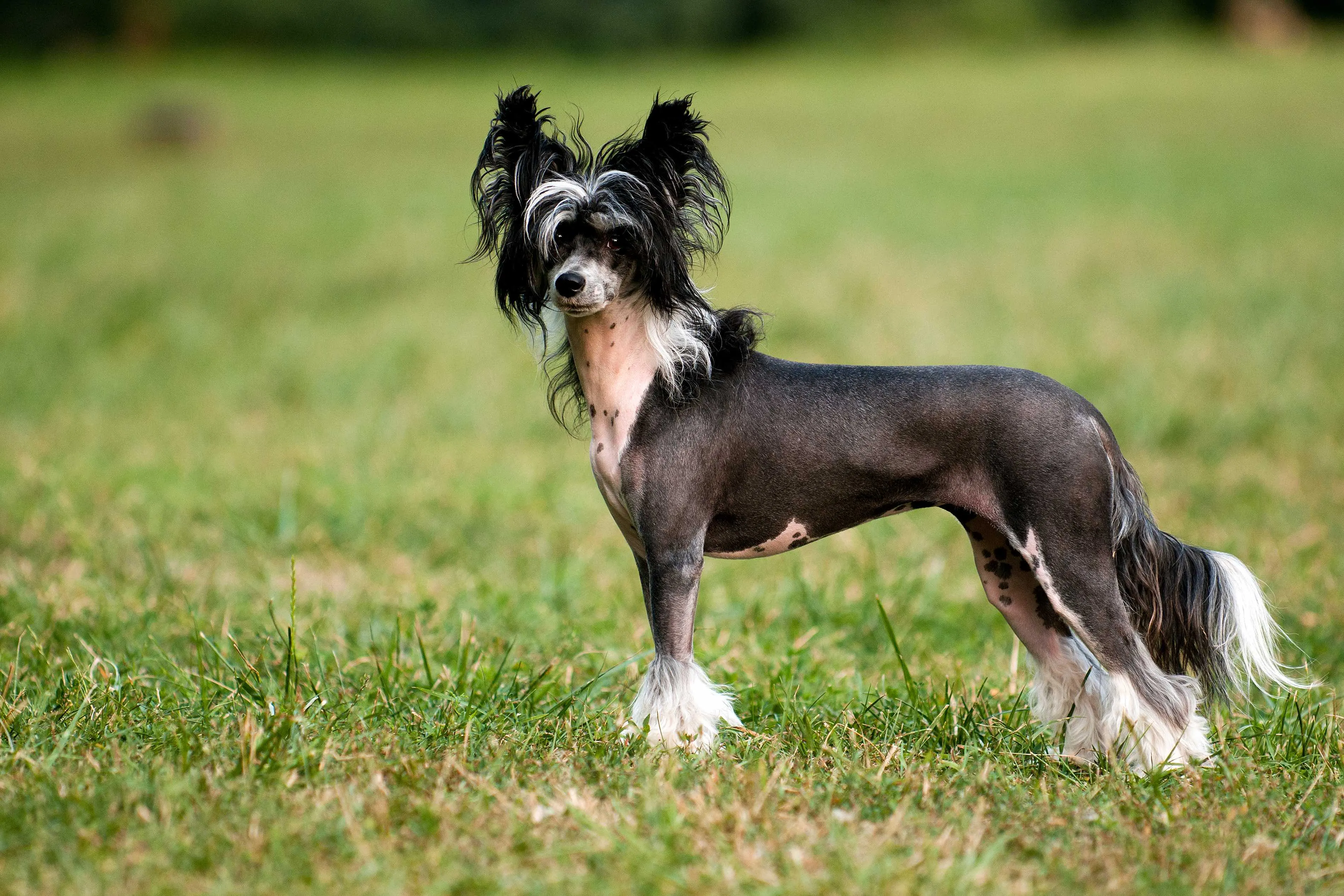 A striking Chinese Crested dog, mostly hairless with tufts of hair on its head, tail, and paws, gazes directly at the camera.
A striking Chinese Crested dog, mostly hairless with tufts of hair on its head, tail, and paws, gazes directly at the camera.
The Chinese Crested is unique due to its two coat varieties: hairless and powderpuff. The hairless variety is almost entirely devoid of body hair, with only tufts on the head, tail, and paws, making it highly hypoallergenic. The powderpuff variety is covered in long, silky hair that also sheds minimally. This breed is known for being playful, affectionate, and a great companion.
7. Portuguese Water Dog
 A black and white Portuguese Water Dog sporting a red bandana stands by the water, looking alert.
A black and white Portuguese Water Dog sporting a red bandana stands by the water, looking alert.
Originally bred to assist Portuguese fishermen, the Portuguese Water Dog has a distinctive thick, curly coat that sheds very little. This makes them a popular hypoallergenic choice. They are intelligent, highly trainable, and energetic, requiring regular exercise, especially water-based activities, as they are natural swimmers. Their coat needs consistent grooming to stay in good condition.
8. Labradoodle and Goldendoodle
 A brown Labradoodle with a friendly expression walks through a park.
A brown Labradoodle with a friendly expression walks through a park.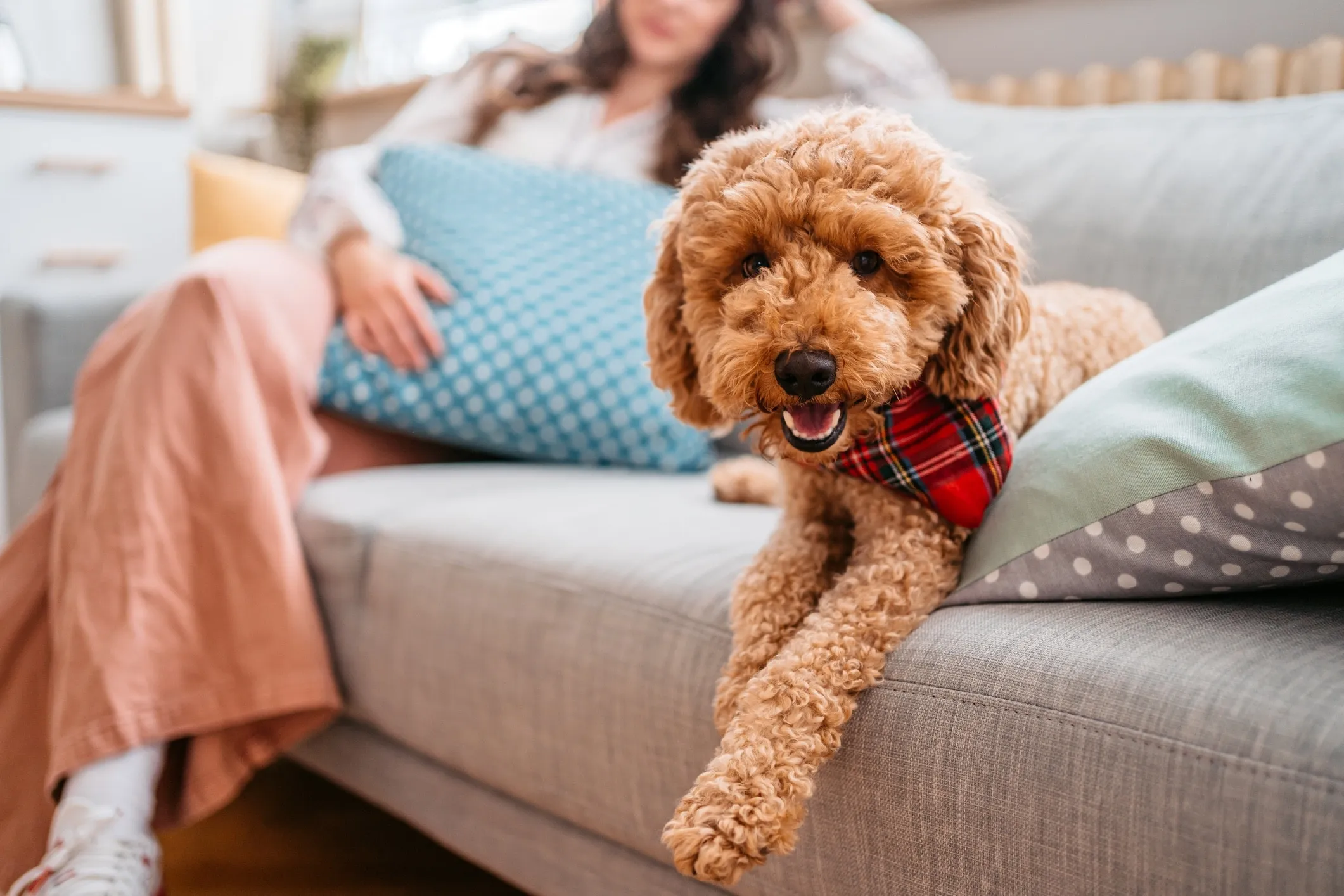 A Goldendoodle rests comfortably on a couch, with a person seated in the background.
A Goldendoodle rests comfortably on a couch, with a person seated in the background.
These popular “doodle” mixes, bred from Poodles and Labrador Retrievers or Golden Retrievers respectively, were initially developed to be hypoallergenic service dogs. They inherit the low-shedding coat qualities of the Poodle and are known for their intelligence, friendly disposition, and trainability, making them excellent family pets. Regular grooming is a must to manage their curly or wavy coats and prevent matting.
9. Affenpinscher
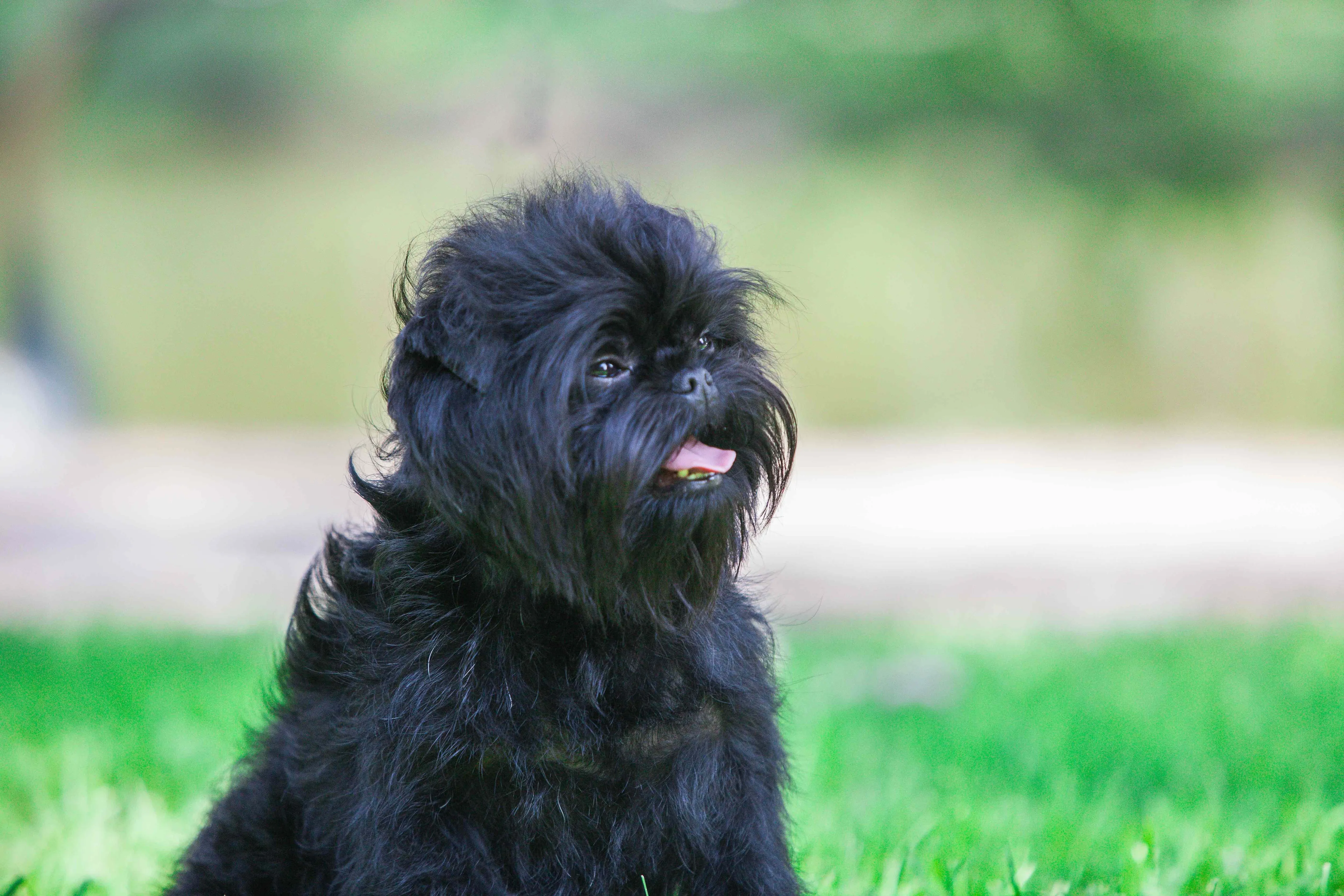 A close-up of a black Affenpinscher dog with a characteristic "monkey-like" face.
A close-up of a black Affenpinscher dog with a characteristic "monkey-like" face.
The Affenpinscher, with its distinctive monkey-like face, has a dense, wiry coat that produces fewer allergens. While this coat requires diligent care through regular brushing and hand-stripping, it contributes to their suitability for allergy sufferers. These small dogs are known for their spirited and curious personalities.
10. Irish Water Spaniel
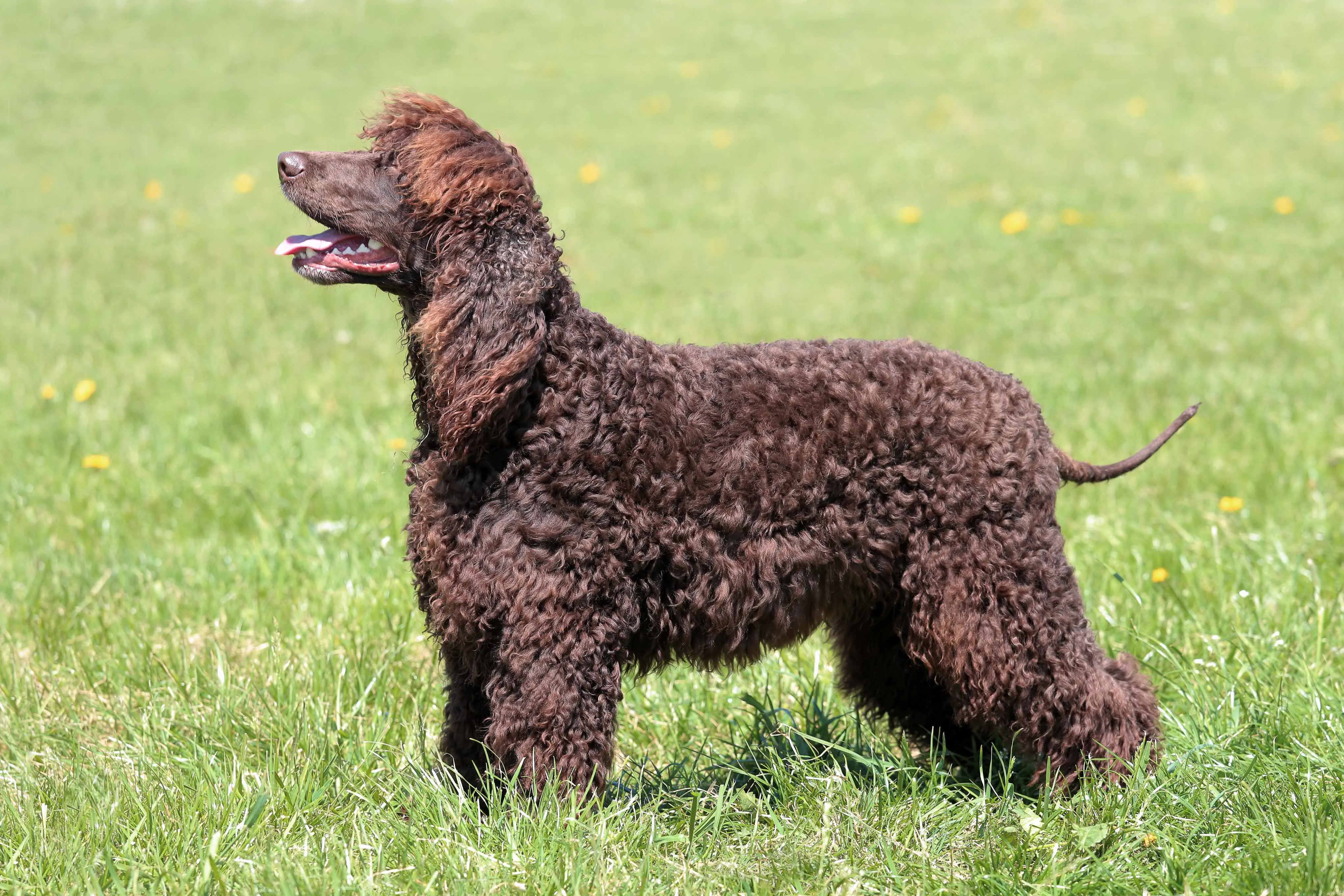 A brown Irish Water Spaniel in profile, showcasing its dense, curly coat and distinctive topknot.
A brown Irish Water Spaniel in profile, showcasing its dense, curly coat and distinctive topknot.
Another water-loving breed, the Irish Water Spaniel, features a thick, curly, liver-colored coat that sheds minimally. Their coat is water-resistant and requires regular grooming. These dogs are friendly, intelligent, and highly trainable, but they possess a high energy level and need ample exercise to thrive.
Essential Tips for Living With a Hypoallergenic Dog
Choosing a hypoallergenic dog is a significant step, but it’s also important to implement strategies to further minimize allergens in your home:
- Maintain a Rigorous Grooming Routine: Hypoallergenic breeds still produce allergens. Regular brushing, ideally daily, can help remove loose dander and hair before it becomes airborne. Professional grooming and bathing every 4-6 weeks with a dog-specific shampoo can also significantly reduce allergens. Consider specialized dander-removing shampoos.
- Keep Your Home Clean: Frequent vacuuming with a HEPA filter, dusting, and washing bedding helps remove dander from your living environment. Using air purifiers can also improve indoor air quality.
- Create Allergen-Free Zones: Designate certain areas of your home, especially the bedroom, as dog-free zones to provide a sanctuary from allergens.
- Consult Your Doctor: If you have significant allergies, it’s crucial to discuss management strategies with your healthcare provider. They can offer advice on medications, nasal sprays, or immunotherapy to help manage your symptoms. Spending time with the specific breed you are considering before bringing one home is also highly recommended.
By understanding the characteristics of dogs that don’t have a lot of hair and adopting proactive management strategies, individuals with allergies can enjoy the immense joy and companionship that a canine friend brings into their lives.
References
- National Institute of Environmental Health Sciences. (n.d.). Allergens and Asthma. Retrieved from https://www.niehs.nih.gov/health/topics/agents/allergens/pets/index.cfm
- PetMD. (n.d.). Hypoallergenic Dogs. Retrieved from https://www.petmd.com/dog/general-health/hypoallergenic-dogs
- PetMD. (n.d.). Types of Poodles. Retrieved from https://www.petmd.com/dog/general-health/types-of-poodles
